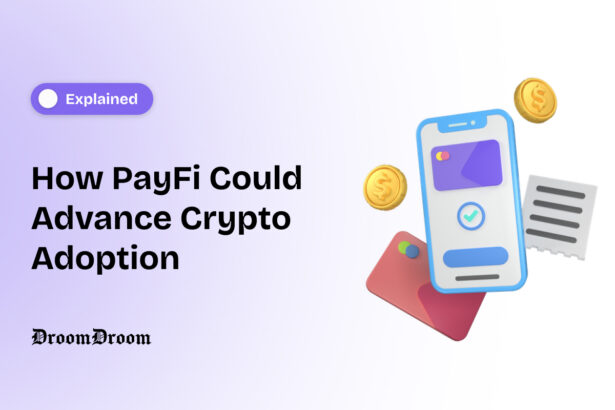In the last six months, PayFi has emerged as the next big thing in the crypto markets, but unlike memecoins, its focus is on utility. The technology aims to create solutions that could help people adopt crypto with ease.
In this article, we will focus on how PayFi can contribute towards greater crypto adoption and also take a deeper look at which factors would be the most helpful in helping PayFi attain this goal.
State of Crypto Adoption in 2025
Crypto markets have seen higher crypto adoption in the last 6 months, thanks to Donald Trump’s election victory with a pro-crypto stance. Data now shows that we have around 800 million with numbers expected to go up to around 1 billion users in 2026.
With such a high number of people, it seems crypto has reached a satisfactory position in the world of finance. However, the truth is far from that.
Most crypto users are either serious investors, traders, or people looking for a get-rich-quick scheme.
Building the Internet’s Payment Layer: Shardeum’s PayFi Vision
However, crypto markets are far capable beyond these. Blockchain technology has the potential to power futuristic technologies like instant money transfers, decentralized clouds, failure-resistant systems, decentralized management, digital voting, and a lot more.
Among them, there is the technology called PayFi, which combines traditional finance principles with decentralized technology, creating a much more resilient financial infrastructure.
PayFi Addresses Following Gaps in the Crypto Markets
Unified Payment Infrastructure
The global payment infrastructure would receive a major boost with a shared or common technology through PayFI.
Currently, most retailers worldwide who receive crypto payments either have to use an exchange-linked gateway (such as Coinbase Commerce) or receive payments via mutually incompatible dApps built on different blockchains.
Financial Inclusion
PayFi could help people access credit at a cheaper price by monetizing assets or sharing their opinions for surveys, market studies, and other ways of social media monetization.
Further, they can access better savings options that are not linked to their local currencies, essentially stopping inflation from impacting their funds.
Micro Asset Monetization
In traditional finance, there are multiple ways to monetize a micro asset, such as monetizing payable bills, selling old assets, and others. A similar solution in Web3 could solve a lot of the occasional liquidity crisis in the markets.
Efficient Cross-Border Payments
Most retailers and retail customers are unaware of the wallet-based crypto payments due to a steep learning curve. A dApp that solves this issue could broaden the crypto-based cross-border payments.
Less Liquidity Constraints
Easy access to monetization of assets, whether crypto-native or RWA, could help in easing liquidity issues during bad economic periods. Further, despite existing technology, there has been little progress towards monetizing them.
Although there are several solutions like liquidity pools, yield farming, and lending, most of these require some level of proficiency, making them unsuitable for common users.
Faster Stablecoin Adoption
Just like any other financial ecosystem, liquidity would play the most important role in PayFi. This would be used for cross-border payments, paying for daily items like breakfast, lunch, coffee, and even for paying salaries.
Hence, a greater adoption of PayFi would directly result in more demand for stablecoins.




















